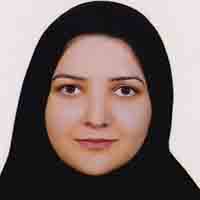Evaluation of Clay Ccontent of Shurijeh Reservoir Formation Using Core Analysis in Gonbadli Gas Field, Eastern Kopet-Dagh Basin
Author(s):
Abstract:
Clay minerals reduce the reservoir quality in different ways. They may cause mechanical problems in drilling and lead to petrophysicalmisinterpretations.Therefore,Clay typing is necessary for upstream petroleum exploration and production industry. In this paper, type, amount and distribution patterns of different clay minerals in 76 core samples from two producing and non- producing wells inthe ShurijehFormation, aging early cretaceous,were identifiedby six different instrumental analytical methods such as X-Ray diffraction (XRD), X- Ray fluorescence, thin section studies, thermal analysis (DTA-TGA), scanning electron microscopy (SEM) and measuring the cation exchange capacity (CEC). The results proved that the dominant clay minerals are illite, magnesium rich chlorite andkaolinite. The minor clays are glauconite (in the both wells), montmorillonite (in producing well) and mixed layers of illite-montmorillonite and chlorite-montmorillonite. The average amount of each clay minerals in non-producing well is more than producing one. Then clay minerals were classified on the percentage basis into five classes (less than 10%, 10-15%, 15-20%, 20-25% and more than 25%).According to quantityof samples in each class, the producing and non-producing wells were recognized as clean and shaly sand respectively. An increase in glauconite and Illite amounts and also an increase in illite and chlorite layers of mixed-layered clayswith increasing burial depth and temperature is an obvious sign of burial diagenesis in this formation. The best correlation was observed between percentages of clay minerals and iron, aluminum, potassium and magnesium.The clay minerals in the ShurijehFormation are diagenetic alteration of rock fragments, plagioclase and alkali feldspar in origin and in some cases they originate from outside with layered distribution. Distribution pattern of the autogenic clays are pore filling, pore coating and pore bridging, which cause the porosity and permeability reduction in this formation.
Keywords:
Language:
Persian
Published:
Geosciences Scientific Quarterly Journal, Volume:24 Issue: 95, 2015
Page:
239
https://magiran.com/p1436326
دانلود و مطالعه متن این مقاله با یکی از روشهای زیر امکان پذیر است:
اشتراک شخصی
با عضویت و پرداخت آنلاین حق اشتراک یکساله به مبلغ 1,390,000ريال میتوانید 70 عنوان مطلب دانلود کنید!
اشتراک سازمانی
به کتابخانه دانشگاه یا محل کار خود پیشنهاد کنید تا اشتراک سازمانی این پایگاه را برای دسترسی نامحدود همه کاربران به متن مطالب تهیه نمایند!
توجه!
- حق عضویت دریافتی صرف حمایت از نشریات عضو و نگهداری، تکمیل و توسعه مگیران میشود.
- پرداخت حق اشتراک و دانلود مقالات اجازه بازنشر آن در سایر رسانههای چاپی و دیجیتال را به کاربر نمیدهد.
In order to view content subscription is required
Personal subscription
Subscribe magiran.com for 70 € euros via PayPal and download 70 articles during a year.
Organization subscription
Please contact us to subscribe your university or library for unlimited access!



